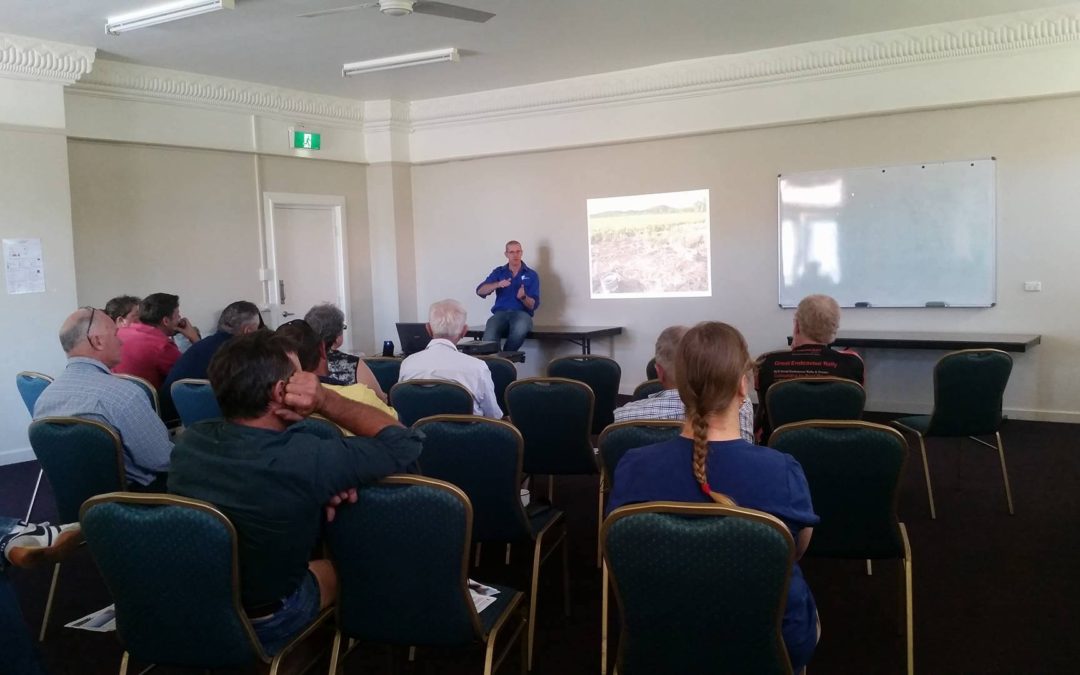Now that the sorghum harvest is complete, the Action on the Ground—Burnett Croppers project is nearing the end.
The project aimed to trial, measure and demonstrate farm technologies that reduce agricultural greenhouse gas emissions (in this case nitrous oxide or N2O), while maintaining and hopefully improving cropping productivity and soil health.
After applying fertiliser to the sorghum, gas chambers were replaced in the field and gas sampling commenced. Gas samples were taken 1 – 3 times/week depending on how dry the soil was (emissions occur following irrigation or rain and are minimal when dry).
Soil was sampled to a depth of 30cm after each application of fertiliser at 2, 6 and 8 weeks. Resulting feedback from the Department of Science Information Technology & Innovation (DSITI) reveals there are still measurable levels of N in the samples. DSITI also found that the Entec (coated Urea) is remaining in the soil as NH4 whereas the Urea is remaining in the soil as NO3. This form of N as NO3 is less desirable as it is more easily converted to gaseous N in favourable conditions such as waterlogging. Following harvest a deep soil sample to 90cm was taken from around each chamber to determine what levels of N are left in the soil, what form the N is in and where the N is sitting in the profile. The analysis of these samples are not yet completed.
Very dry conditions has meant the trial was irrigated three times during the growing season. While this is not ideal due to the risk of irrigation overlap near the chambers, at least the sorghum was kept alive. The dry conditions also brought unprecedented levels of Rutherglen Bug (pictured) that attacked summer sorghum and mungbean crops in the district.
These sap-sucking insects cause damage to the seed while it’s still green. Two knock-down sprays of Dimethoate were applied to the trial sites during the critical phase before the seed hardened off.
A workshop delivered in November 2016 was very well received by growers. This event included trial updates and presentation of results from previous seasons by Professor Phil Brown (Central Qld University) and Jenny Voigt (BCCA), as well as a thorough discussion on fertiliser efficiencies led by Professor Mike Bell (University of Qld).
Copies of workshop Factsheets are available at the BCCA office or can be emailed on request. There are also extra copies of the Fertcare “Best Management Practices to reduce nitrous oxide emissions for irrigated broadacre cropping (excluding rice)” available at the office.
DSITI, in conjunction with Professor Phil Brown will be writing up the final technical report which we will post on the web.

